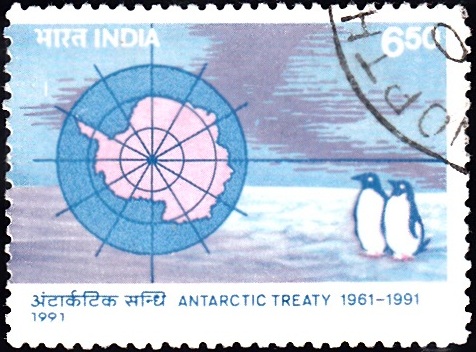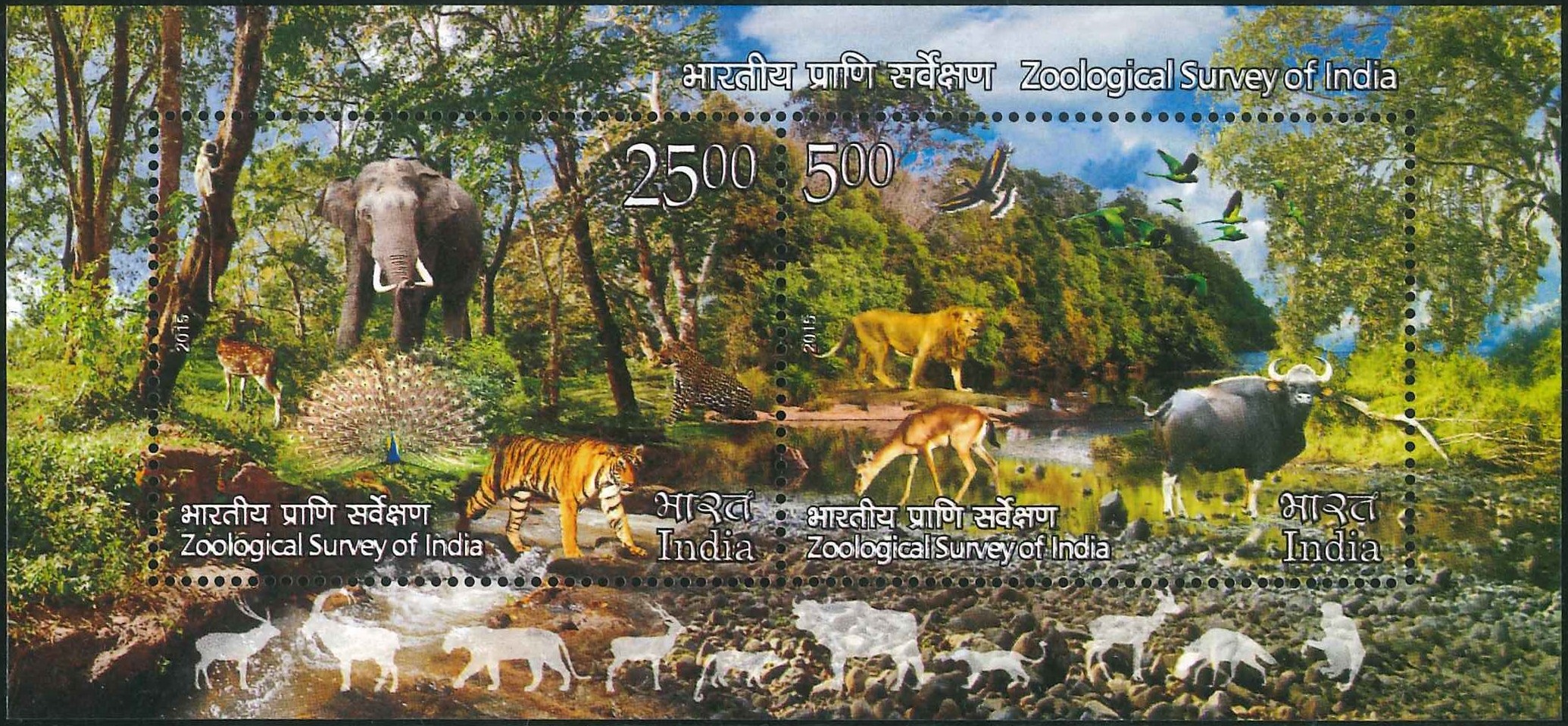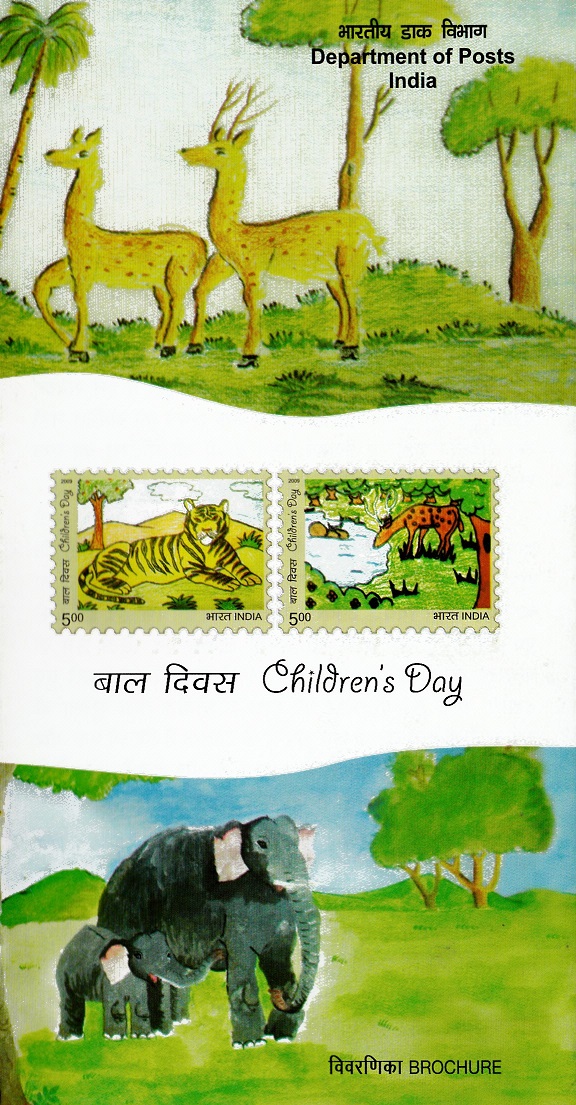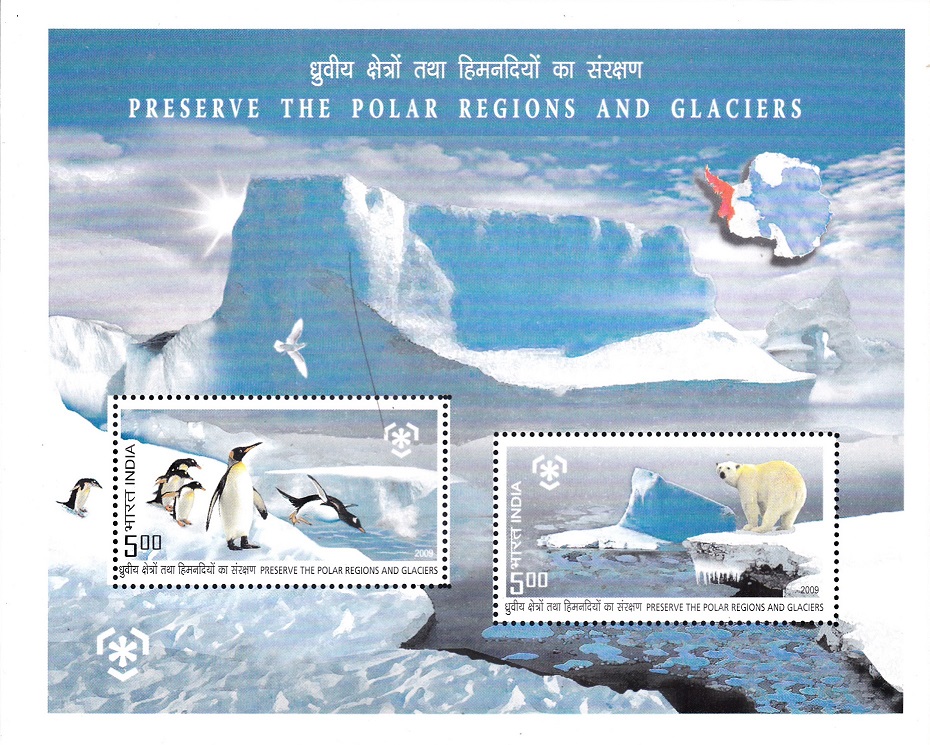
India on Preserve the Polar Regions and Glaciers
A Miniature Sheet consisting of 2 nos of commemorative postage stamps on Polar regions of Earth : North and South Poles :
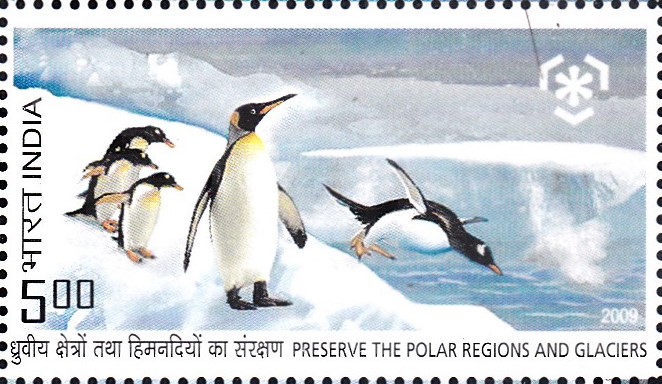
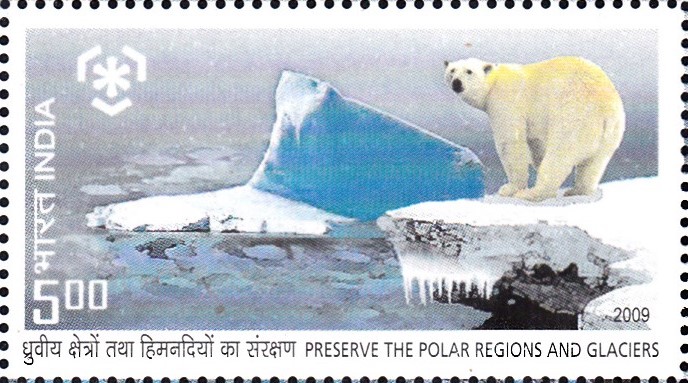

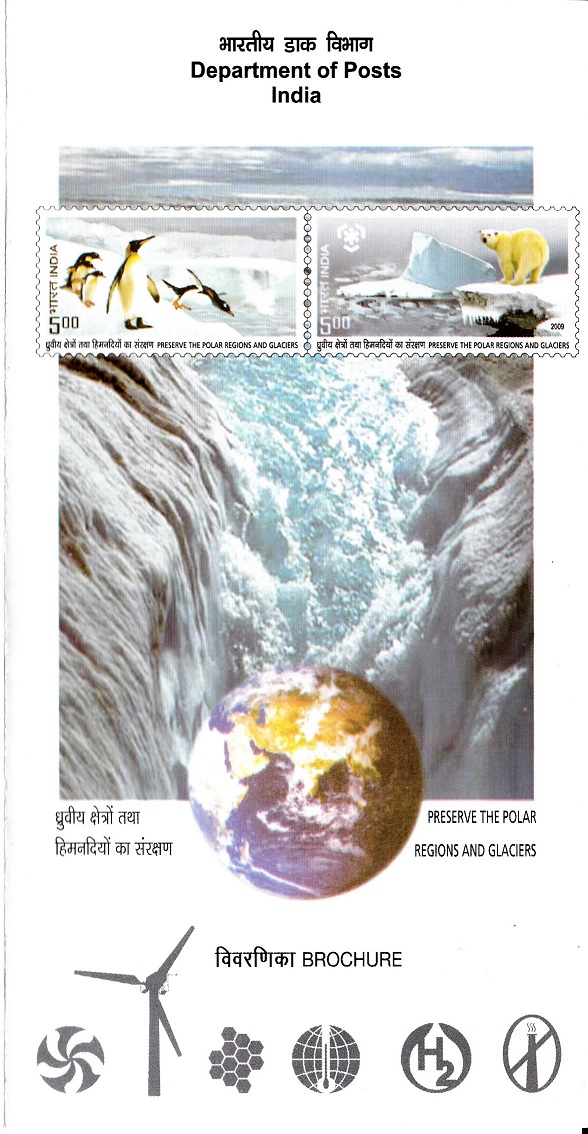 Issued by India
Issued by India
Issued on Dec 19, 2009
Issued for : India Post, by issuing a commemorative Postage Stamp carrying the message to save Polar Regions is contributing to the effort to sensitize people to leave the Earth a better place for future generations.
Credits :
Stamp : Sankha Samantha
FDC & Cancellation : Alka Sharma
Type : Miniature Sheet, Mint condition
Colour : Multi colour
Denomination : 500 Paise each
Stamps Printed : 3.0 Million each
Miniature Sheets : 0.8 Million
Printing Process : Wet–offset
Printer : Security Printing Press, Hyderabad
About :
- Earth’s Polar Regions, also known as Frigid Zones, at the North Pole and South Pole, are dominated by the polar ice caps, resting respectively on the Arctic Ocean and the continent of Antarctica.
- Polar weather influences climates in areas as far away as the tropics and changes will have effects across the world. Polar sea ice is currently diminishing, possibly as a result of anthropogenic Global warming. Some scientists have estimated that the Arctic basin will experience ice-free-summers by 2040 or even sooner, as the ice serves as a moderator of the planets climate, in part by deflecting heat radiation back into space. The breaking down of ice in the polar regions has resulted in an increase in temperature by 2.5 degree Celsius over the past 50 years.
- Decline in ice and snow in both the Polar regions is affecting human livelihood as well as local plant and animal life in the Arctic as well as global atmospheric circulation and sea level. Climate change affects various factors of the habitat of animals adapted to live in really extreme conditions and put population at risk.
- Several species of living things call the Polar regions their home from tiny lichens encrusting the rocky landscapes of the Arctic tundra to huge blue whales swimming through the frigid water of the southern Ocean. Some animals are only part time residents, migrating to warmer, lower latitudes during the winter months.
- Polar bears, penguins, seals, whales and walrus are just a few of the species living in these very cold regions. They are specially adapted to survive the extreme cold of the Polar regions.
- The Emperor penguins the world largest penguins could be pushed to the brink of extinction by the end of this century due to the melting of Antarctic Sea ice caused by global climate change. Similarly Polar bears in the Arctic, the largest bear species, also rely heavily on sea ice.
- “No man is an island” – said the poet. And today this stands as a scientific reality before us, proved by the interconnectivity of human life across the globe with all animal and plant species, the earth, the climate and the air around us. It is essential that the delicate balance of ecology be understood and maintained with a sense of commitment and responsibility.
- Text : Based on Material available in the internet.
Subscribe
Login
0 Comments





